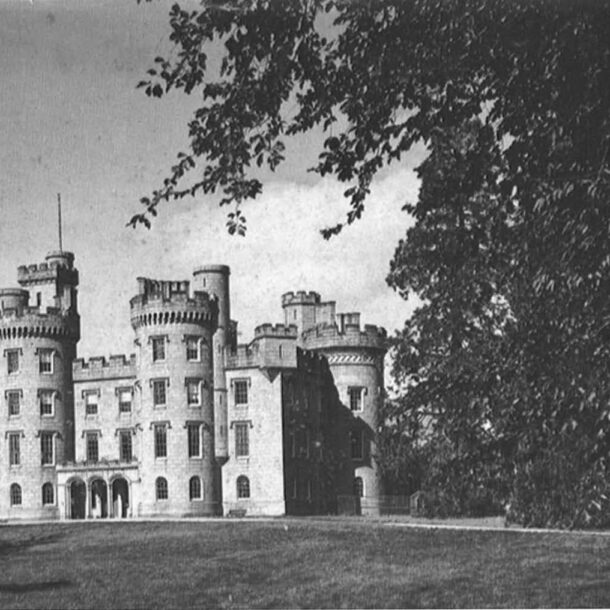

Close

Eoin MacNeill was a scholar and a rebel who ignited a national fascination with Ireland’s past. He championed the Irish language, and as historian Francis John Byrne put it, “dragged Celtic Ireland practically single-handed from the antiquarian mists into the light of history.” He saw history’s direct implications on the present and urged for Ireland’s independence.
While he was a serious scholar, he was also a man of action. He established, armed, and trained the Irish Volunteers, a militia that swelled to 170,000 men. He viewed the volunteers as a civil defense force who could also resist any attempt from Britain to conscript Irishmen into World War I and who could protect Home Rule. MacNeill wanted full independence for Ireland and led a radical minority of the volunteers who refused to volunteer for World War I, but he was a realist not a romantic. He resisted any movement towards armed rebellion because he did not believe that the Irish could win; no amount of nationalism could compensate for a lack of guns and trained men. Calling out a half-armed force would be inviting a massacre. However, without his knowing, a radical group—the Irish Republican Brotherhood—used MacNeill as a figurehead while they organized a revolution among his volunteers.
The Brotherhood chose the peaceful maneuvers during Easter Sunday 1916 as a cover for armed rebellion and issued an order to the volunteers across Ireland to prepare. Their strategy leaned on the old adage that “England’s misfortune is Ireland’s opportunity,” and they hoped that the battles of World War I would absorb enough of the British Army’s fighting power to give the scrappy Irish militias a chance. An emissary to Berlin tried to secure guns and men, but only met with middling success. The one ship of arms he did secure never arrived in Ireland. When MacNeill discovered the plan, and the lost German guns, he issued a countermand in national newspapers urging the volunteers to stay home.
MacNeill’s counter-order largely thwarted the rebellion, but several thousand men still took up arms in Dublin. The rebellion was the most significant violent resistance in Ireland to British rule since 1798. MacNeill fled to the countryside, ruining his failure to prevent the inevitable massacre. Although he had had no part in planning the insurrection, he feared British reprisal. First, he sought refuge in one Catholic monastery, but he was turned away. Perhaps the priests themselves were scared of reprisal. Then he arrived at Orlagh House, which had served as a home for Augustinians since 1872. The monks allowed him to stay. The sweeping view of Dublin from Orlagh gave him a panoramic view of the mayhem unfolding below. He saw the smoke rising over Dublin as streetfighting clogged the thoroughfares and Britain bombed the city center. He watched as ships bearing British artillery and men arrived at the coast. As he had predicted, the Easter Rising failed. Gradually, the British surrounded and choked out the Irish rebels until they won an unconditional surrender. Over the six day rebellion, 460 people died. 260 were civilians, some were mistaken for rebels and others killed in airstrikes. 143 were British police and soldiers, and 82 were Irish rebels. Entire city blocks in Dublin’s oldest districts lay in ruins.
The British reprisal was brutal and swift. 3500 were arrested, including MacNeill although he had tried to prevent the uprising. The ringleaders of the Easter Rising were executed. The British sent over 1000 Irishmen to internment camps and British prisons. MacNeill was sentenced to life imprisonment, but he was released on amnesty in 1917 and re-entered politics as a realist in a time of extremists.